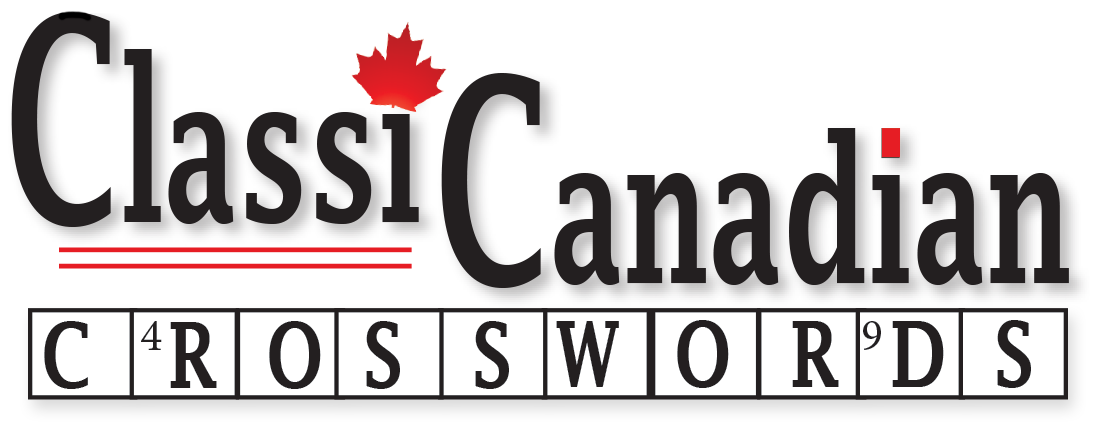Greetings! I thought it might be a good idea to have a pinned post that defines some of the specific and odd terms I use in writing up the weekly ClassiCanadian Crosswords blog. Let me know in the comments here (or in the comments for individual blog entries) about any terms you’d like to include.
- Answer: The entry placed in the grid that answers the clue.
- Cheating: Using the “Check” or – heaven forfend – “Reveal” helpers when solving online or in an application like Across Lite. Googling is usually cheating as well – see clean solve below.
- Clean solve: A solve without any errors or a solve without using any external aids to find an answer. Some may say this is a solve without cheating. There is some debate whether searching the web for something you absolutely don’t know is “cheating.” I’m of the mind that it is frowned upon, but if you absolutely don’t know something and the context and crosses are no help, by all means look it up. How else are you going to learn? And then you have that knowledge for future solves.
- Clue: The description of the entry – you use the clue to figure out what answer/entry to place in the grid.
- Crosses: Entries crossing other entries, either across or down. They are helpful in getting entries you don’t know by supplying letters to that entry.
- Crosswordese: Clues or entries that appear more frequently in crossword puzzles than they do in regular use.
- Entry (or sometimes Answer): The answer to the clue.
- Fill: Grid entries not related to the theme.
- Fill-in-the-blank: A “fill-in-the-blank” (or FITB) clue is one that contains a missing word (blank) indicated by three underscores (___); the word that properly fills the blank is the answer.
- Green Paint: An awkward paired adjective/noun entry that is unremarkable, or contrived to make it work in the puzzle. e.g., [Something used in a home remodel]: GREEN PAINT.
- Grid: The puzzle layout, usually 15×15 squares, but not always.
- Grid spanner: An entry, usually a themer, that takes up all the squares in one dimension (across or down) of the grid. Since Barb’s puzzles are usually 15 squares by15 squares, these entries are 15 letters long (without spaces).
- Natick: An unguessable cross, especially where the cross involves two proper nouns, neither of which is exceedingly well known. Coined by Michael Sharp (aka Rex Parker).
- NW, NE, SE, SW: Corners of the puzzle grid referenced as compass points – the top of the puzzle is North (N), bottom is South (S), left side is West (W), and right side is East (E). The corners are: upper left – Northwest (NW), upper right – Northeast (NE), lower right – Southeast (SE), lower left Southwest (SW).
- Partial: A clue where the entry is a fill-in-the-blank. e.g., [Sainte-___ (Quebec City Suburb]: FOY. A partial is always indicated by three underscores, no matter how long the actual entry is.
- Punny (clues): Clues that do not directly define the answer being sought, or use puns or double meanings in an unusual way. Punny clues end in a question mark. e.g., [Result of a too-small jury box?]: PEER PRESSURE – A jury is made of of one’s peers; if the jury box is too small the peers are under pressure.
- Rebus: The use of two or more letters in a single square of a crossword grid.
- Revealer: In a themed puzzle sometimes an additional entry is used to indicate how the themed entries (themers) are related. The reveler entry may be in one of the usual themer locations, or may be elsewhere in the grid (usually toward the S part of the grid).
- Run the alphabet: If you have all but one letter of an entry (actually two entries) you may try to get the correct answer by trying each letter of the alphabet in the square you don’t have.
- Solve: The act of completing a crossword puzzle. We are solvers; we never “play” a crossword puzzle.
- Straight (clues): Clues that relatively directly define the desired answer/entry. However, sometimes alternate meanings are used and not indicated by a question mark, so even straight clues aren’t always that straight (it’s a puzzle, after all).
- Theme: A common idea or concept used in constructing the puzzle. Usually the theme is several entries (themers) that are related somehow. Other themes include word ladders, quotes and quips, and dozens of others.
- Themer: An entry that is part of the puzzle’s theme, usually located horizontally (but not always) in the grid and in one of the longer entry spaces.
- Tuze: The New York Times puzzle comes out daily, and the puzzles increase in difficulty as the week progresses; i.e., Monday is easy and Saturday is hard (Sunday is a larger grid size and runs at about a Wednesday difficulty). The easier puzzles are usually themed, and harder puzzles (Friday and Saturday) are usually themeless. Tuesday puzzles often seem to be the “dad joke” of the week – the theme is usually silly, and the difficulty is usually pretty easy. When a puzzle from any day of the week seems silly or easier than it should be it’s said to “tuze.” It’s unlikely I will ever use this term in a ClassicCanadian puzzle blog, because it only comes out once a week and on Wednesday.
Well, there you go – I hope this helps you understand and enjoy the puzzles (and my blog entries about them). Please let me know in the comments any corrections or clarifications needed, or if there are any terms you’d like me to add.

This is great, thanks!